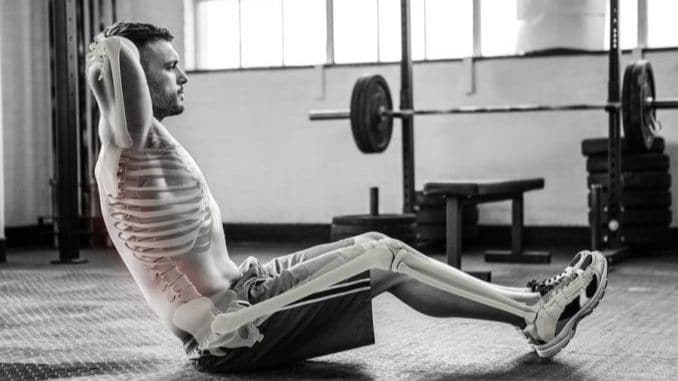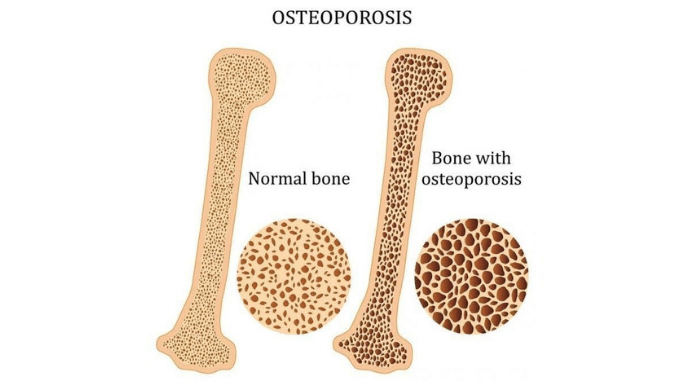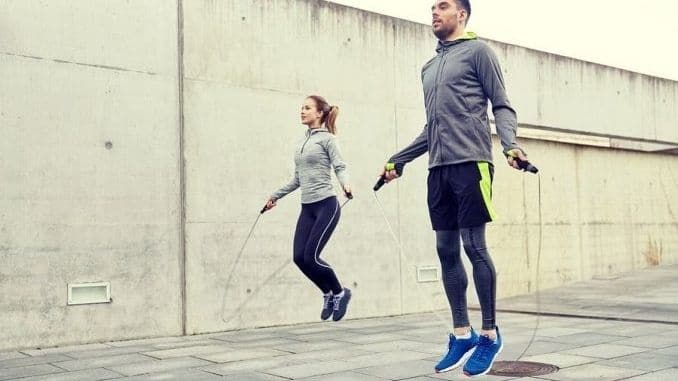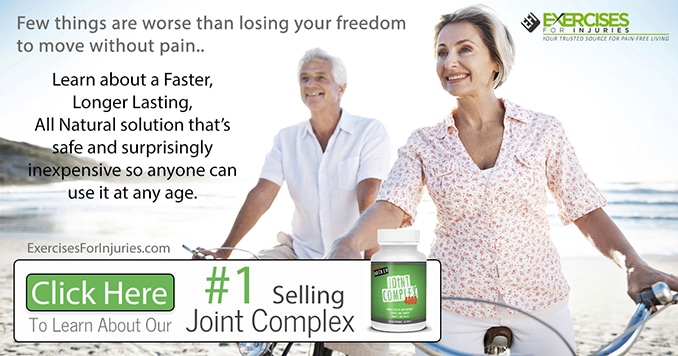
Maintaining strong bones is a health concern that often gets neglected until or unless there is a diagnosed problem. Often, our focus is on fat loss or muscle gain when it comes to exercise. While these goals are certainly worthwhile, incorporating impact exercises for bone health can benefit your body in some important ways. Let’s look at what bones bring to the table for your body and your health.

Healthy Bones
Your bones give your body shape, the ability to move and protect your brain, heart and other vital organs. Just like the other components of your body, bones are comprised of living tissues that grow stronger or become weaker depending on age, lifestyle and health concerns. Calcium and collagen coupled together give your bones the strength to hold their shape and enough flexibility to withstand pressure without rigidity.
As children, we are adding to our bone structure constantly. As our bodies grow, our bones grow, strengthen and harden. Naturally, once the human body has reached its full-grown size, the bones stop growing and strengthening on their own. For most people, this happens around age 20. At around age 30, the human body can begin to reverse this process as bones begin to release more minerals into the body than they take in. With time and lack of intervention, this process leads to weaker, brittler bones that are susceptible to breaks.
Why Bones Become Weak
There are many reasons why bones can be weakened including genetic-, nutritional- and hormonal-related causes. However, the most common bone-weakening disease is osteoporosis. Osteoporosis is a disorder characterized by compromised bone strength and structure. Leaving those who suffer from osteoporosis at risk of fracture. Unfortunately. There are no signs or symptoms of osteoporosis and most people do not find out they are afflicted until a break happens.
The causes of osteoporosis are divided into three categories: failure to develop a strong skeleton. The bone loss due to excessive breakdown and failure to replace lost bone due to an impaired formation. While the second and third factors are mostly the natural result of aging and losing certain hormones and growth factor production. The first factor, developing a strong skeleton relies heavily on things like nutrition and exercise. In particular, consumption of calcium, phosphorous, and vitamin D as well as weight-bearing or impact exercises on bone health. They are closely associated with the formation of strong bones. For this reason, forming healthy bone habits early in life is ideal. However, anyone can see real improvement in bone density and strength with a healthy regimen of quality nutrition and appropriate exercise.
How Exercise Builds Strong Bones
Weight-bearing exercises, or those that require you to be on your feet moving, cause new bone tissues to form. This is because the bone is formed after stress has been applied to it. When we perform weight-bearing or high-impact exercises on bone health. The mechanical load of the exercise is applied to the bone causing stress and, in essence, damage to the affected area. Then, bone cells migrate to the stressed area and begin repairing the bone and making it stronger. This works much the same way that muscles become stronger after exercise breaks them down.
It’s important to note that not any type or level of exercise triggers this response in the bones. There is a threshold that determines what signifies a significant enough level of stress to promote growth called the minimal essential strain. The minimal essential strain is determined by the intensity level of a given activity.
Which Exercises Are Best?
The key to choosing exercises that have the most real potential to promote bone growth and strength is the level of impact. Impact exercises are those that require jumping or other forceful impacts like kickboxing or boxing. Other activities that can be done at a high-impact level include exercises like jogging and hiking or playing sports like tennis or soccer.
Scientific Support for Impact Exercises in Bone Strengthening and the Role of Progressive Overload
A 1997 study performed at Edith Cowan University compared female athletes in high-, medium. And non-impact sports to controls and found that those who participated in impact sports had a higher bone strength and bone mineral density than those who did not. A study published in 2004 in Europa Medicophysica suggests incorporating dynamic, high-impact training. Such as jumping and racquet sports, to stimulate bone growth. Participating in organized sports such as basketball and tennis is one way for an individual to be subjected to progressive overload.
Progressive overload is the theory used to add stress continually to exercises in order to continue having a positive outcome from the exercises. For example, if you do squats every day for a month. You’ll likely gain muscle strength in the quadriceps and hamstrings while also strengthening the bones of the legs. However, continuing doing the same squats at the same intensity level will eventually plateau your results. Increasing the intensity and impact level of your squats by adding in weights or jumps ensures that you continue to see improvement.
Just as you can target specific muscle groups to gain a hypertrophic effect. You can target bones with high-impact exercise to build strength. High-impact exercises performed with the arms like punching a bag or lifting weights will cause the bone repairing and strengthening rebuild process to occur specifically in the bones that received the stress. This means that you can choose to focus on bones that tend to be high risk for fractures. Like the wrists or hips by choosing high-impact exercises that train these areas.
The Challenge
So, what is the main problem with high-intensity, high-impact exercise? Not everyone is fully equipped to perform them safely. Always be sure to check with your doctor before taking on a particularly difficult new fitness routine. The good news is that modifications exist for nearly any high-impact exercise. Performing the modified versions of exercises helps build muscle strength and stamina to be able to perform the higher-intensity version of the move eventually.
If you already walk regularly, trying some jogging or adding weight in the form of ankle or hand weights can help increase the impact enough to see results. The best approach is early and often a plan of attack. There’s no time like now to get moving and work toward stronger bones that will carry you throughout your life.
If you want to overcome the aches and pains that have been keeping you from enjoying life, then check out Joint Complex 4000, here! Formulated with the best natural pain-relieving supplements for your joints.
.



